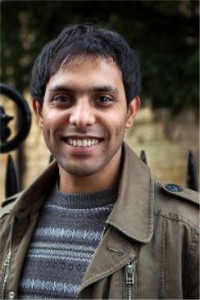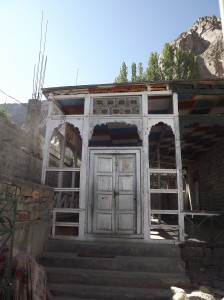 For our Blog Competition 2013, we asked for people to submit articles addressing one of two topics. Ekbal’s article discusses the role of religion in disaster management, and his entry was highly commended by our judging panel.
For our Blog Competition 2013, we asked for people to submit articles addressing one of two topics. Ekbal’s article discusses the role of religion in disaster management, and his entry was highly commended by our judging panel.
Ekbal is currently a PhD student at the University of Leeds. His work involves geodetic monitoring of strain accumulation along the North Anatolian Fault in Turkey. Ekbal received a Ba and MSci in Natural Sciences from Cambridge University. He has a strong interest in science communication and works as the social media outreach coordinator for the Climate and Geohazard Services (CGS) based at Leeds. Ekbal has also worked closely with Geology for Global Development in the past through our University Groups in both Cambridge and Leeds.
The relationship between religion and natural hazards is nothing new. Religion plays an important role in how societies and cultures view and respond to disasters. However, very often religious customs and beliefs are ignored by people when approaching disaster risk and response.
The science

The 2004 Indian Ocean tsunami hits a beach in Thailand. Credit: Wikicommons
The ‘Boxing Day tsunami’ was a result of a magnitude 9.2 earthquake, one of the largest ever recorded in the instrumental period, off the western coast of Indonesia. The earthquake occurred on a plate boundary where the Indo-Australian plate is subducting beneath the Indonesian arc. The ruptured fault was nearly 1200km long with an average displacement of around 20-30m. This sudden offset of the sea floor resulted in a devastating tsunami. Most of the ~225,000 recorded deaths were due to this tsunami. The people of Banda Aceh, the provincial capital of Sumatra, reported the highest percentage of fatalities.
The religion
Indonesia is the world’s most populous Muslim nation with 87.2% of its 237 million people following the Islamic faith (2010 figures). The Islamic religion is not unaware of earthquakes. Sura 99 in the Qur’an is titled ‘The Earthquake’. The first eight verses speak of the events preceding the Day of Judgement. Najeeb-ur-Rrahman, an imam at the World Islamic Mission in Oslo, explains: “Major earthquakes will take place. The whole universe will collapse. Everything will be laid to waste. Everything will pass away.”
It is no surprise then that the 2004 disasters caused many people to look for solace in their religion.
Twenty nine year old Sinta, an English graduate, used to love listening to Boyzone and wear jeans and tight tops. ‘But when I saw on television what happened, I promised to God I would be a good Muslim until the end of my life. Since the tsunami, I’ve dressed properly and prayed five times a day.’
Mahudin was Banda Aceh’s best known comedian. ‘Art is nonsense, it’s nothing, trivial, worthless. I am going to be a preacher or something.’
Mahudin and Sinta were not alone in this change of thought. Across the world many people from various religions saw the disaster as a wake up call to correct their ways and come back to God.
In Aceh, the survival of mosques in destroyed villages was seen as an injunction from Allah to pray.

In Turtuk, Kashmir, the local mosque was one of the only buildings left standing after a devastating flood. A second mosque is now being built in the town. Credit: Rosalie Tostevin
So why do we see this pattern? I believe that people seek answers to events that have had a profound impact on their lives and the people around them in things they are familiar with. Religion is ideal in this respect. It provides an answer, in that the disaster was God testing one’s faith or punishing the sinners. All He requires in return for peace and solace is faith. Village leader Bunchia answers: ‘It was God putting us to the test. He is trying to make people better. If we are not tested, we can never improve.’
Religion, therefore, plays a pivotal role in people’s approach to comprehending a disaster. Organisations out in the field after such events must be aware of the sensitive nature of some religious customs in their post-disaster recovery and aid work.
Perhaps this is also an opportunity for us to get simple hazard concepts and ideas to the rural populations in these countries? I believe it is time we increased our efforts for disaster risk education and raising awareness through mosque imams.
Recommended Reading
The end is Nigh: A History of Natural Disasters, 2009 – Henrik Svensen
An in depth article in the Guardian from Jason Burke

omeye chimaobi kenechukwu
nice and great one,ekbal.may allah be with you
Ekbal Hussain
Thanks mate. Glad you like the article. And with you!